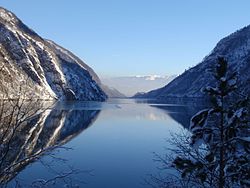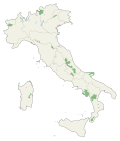| Dolomiti Bellunesi National Park | |
|---|---|
| Parco nazionale delle Dolomiti Bellunesi | |
 | |
| Location | Province of Belluno, Veneto, Italy |
| Nearest city | Belluno and Feltre |
| Coordinates | 46°18′N12°04′E / 46.300°N 12.067°E |
| Area | 32 square kilometres (12 sq mi) |
| Designation | 1988 |
| Authorized | 1990 |
| www | |
 Interactive map of Dolomiti Bellunesi National Park | |
| Part of | "Pale di San Martino San Lucano – Dolomiti Bellunesi – Vette Feltrine" part of The Dolomites |
| Criteria | Natural: (vii)(viii) |
| Reference | 1237rev-003 |
| Inscription | 2009 (33rd Session) |
The Dolomiti Bellunesi National Park (Italian : Parco nazionale delle Dolomiti Bellunesi) is a national park in the province of Belluno, Veneto, in the northern Italy.
Contents
- History
- Territory
- Mountain ranges
- Rivers and streams
- Municipalities
- Flora
- Fauna
- See also
- References
- External links
Established in 1988, the national park is included in the section "Pale di San Martino - San Lucano - Dolomiti Bellunesi - Vette Feltrine" of the Dolomites declared World Heritage Site by UNESCO in 2009.



